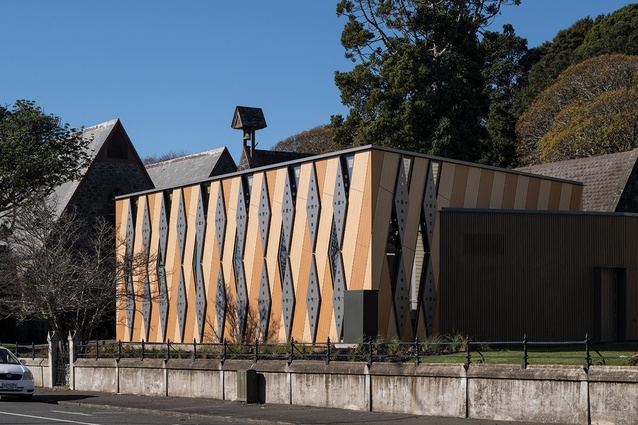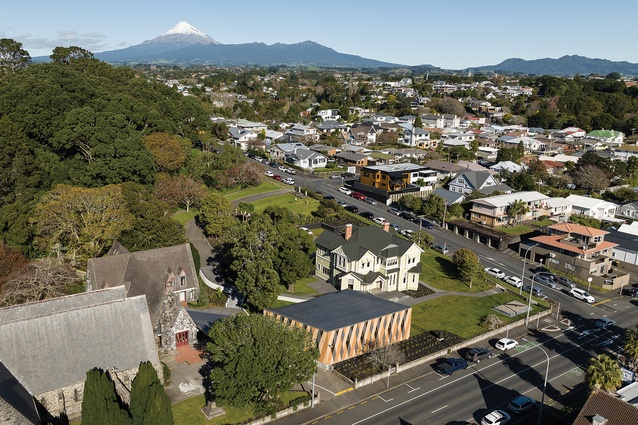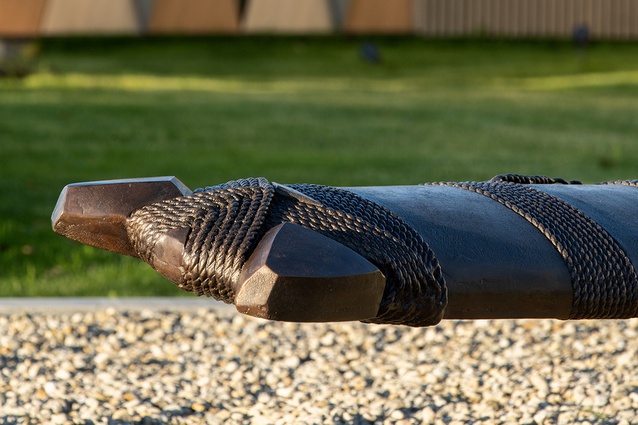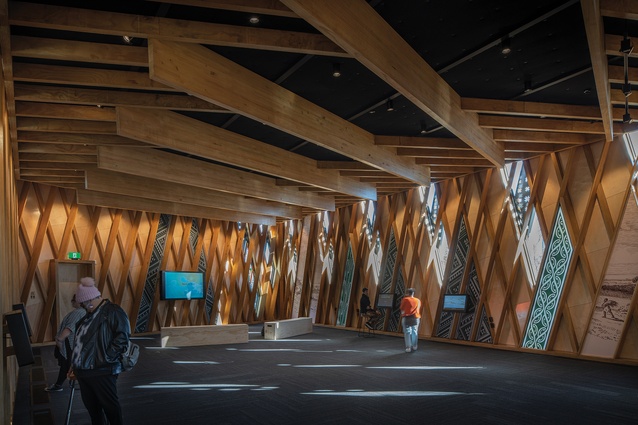Towards meaningful reconciliation: Te Whare Hononga
Tennent Brown’s recently opened Te Whare Hononga at the Taranaki Cathedral site in New Plymouth sits alongside the country’s oldest stone church, St Mary’s (1846), and its restored colonial-era vicarage.
A visitor centre and education and exhibition space, the 198m² project formed part of the Government’s $5-million contribution towards the cathedral’s $20-million earthquake strengthening.
Architect Hugh Tennent says the kaupapa of the project is one of reconciliation: the uplifting of tangata whenua on the entire site. The patterning and structure of the whare is designed to reflect the two peoples and this intention of reconciliation.
The whare tells the story of Ngāti te Whiti hapū and its interaction with St Mary’s, where British forces were garrisoned during the Taranaki wars (1860–1861).
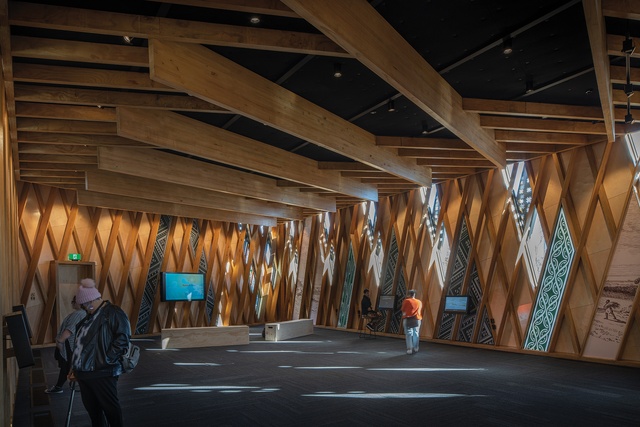
The design of the timber diagrid structure reflects its name — the house that binds, brings or weaves together — with both exterior and interior references to a woven kete, a kono or food basket and the waharua kopito taniko patterning representing the change that occurs when peoples or events cross.
Heritage Taranaki secretary Rob Green, who was involved in consultation over the building’s design, said while some people found the juxtaposition of the building’s design with that of its neighbours to be “uncomfortable”, it deals with an uncomfortable past. “We’re a society that is waking up and learning its history.”
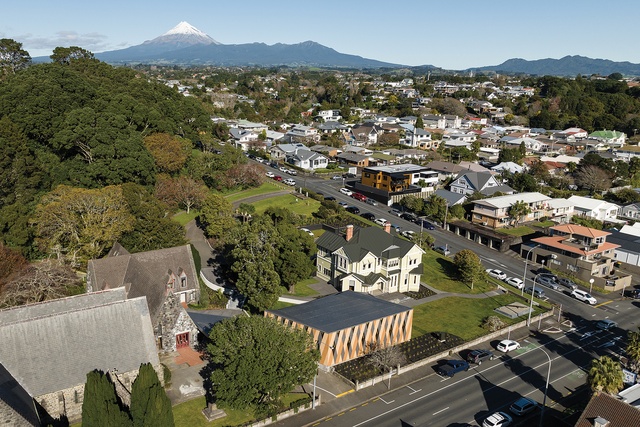
The positioning and form of Te Whare Hononga honours old sight lines to Paritutu and to Pūkākā Marsland Hill, and visitors to the whare from around the maunga and the motu will be able to discover the history of the region in the purpose-built space.
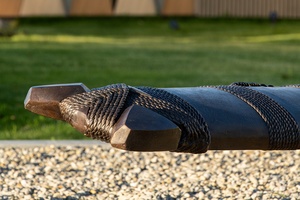
Beside the whare is a memorial to Ngāti Hauā chief Wetini Taiporutu and his son Hemi, Ngāti Apakura chief Whararangi, Ngāti Kōura chief Hakopa and two other unnamed rangatira, who were buried in the grounds of the cathedral after the land wars. Their resting place is now marked by a three-metre bronze toki (adze), which was designed by artist Rangi Kipa and sits on top of a stone-filled platform.
Taranaki Cathedral Dean Jay Ruka (Ngāti te Whiti, Puketapu, Te Atiawa, Ngāti Mutunga) said the memorial honouring these rangatira is a tangible first step in the cathedral’s commitment to real and meaningful reconciliation.

